Best SEO Practices: Key Strategies for Dominating Search Engine Rankings
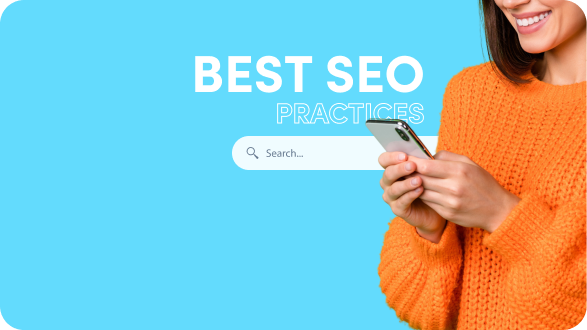
Whether a small startup or a large corporation, standing out in Google is critical. But how to ensure your content doesn’t get lost in the online ocean? By implementing the best SEO practices, a methodology that helps websites achieve higher rankings in search engine results pages (SERPs). In this article, we’ll guide you through the most effective SEO practices and how they can dramatically improve your website’s visibility.
Understanding SEO and Its Importance
SEO, or Search Engine Optimization, is a set of strategies used to increase the quantity and quality of traffic to your website through organic search engine results. Essentially, it involves making your site more attractive to search engines like Google, Bing, and Yahoo. SEO is a cornerstone of digital marketing because it enables businesses to gain visibility and attract potential customers without the direct costs associated with paid advertising.
Best SEO Practices for Your Website
Let’s explore the fundamental SEO best practices and trends that can help your website climb to the top of the search rankings.
1. Content is King
Creating high-quality content is the heart of best SEO practices, and every site owner should make great content their goal.
Your content should provide real value to your audience, be relevant to their interests and queries, and contain the keywords they are likely to use when searching online. But, it’s not just about stuffing your content with keywords. The content should be engaging, informative, and well-structured with headings, subheadings, and bullet points for easy reading.
While having a steady stream of content is important, blending relevance with authority is what truly matters for SEO. To do so, adhere to the following methods:
Skyscraper technique
Using the skyscraper technique, you first pinpoint content that’s already garnering attention on your website. Next, aim to exceed this existing standard. You can do so by crafting content that is more exhaustive than the already successful content, incorporates the latest information, and is also filled with practical, step-by-step guidance. By doing so, you set a new benchmark for quality and utility that rises above the competition.
E-E-A-T principle
Google’s E-E-A-T, which stands for Experience, Expertise, Authoritativeness, and Trustworthiness, is an extension of the original E-A-T concept – a set of criteria to evaluate the quality of content on web pages. While the original E-A-T concept focused just on Expertise, Authoritativeness, and Trustworthiness, preferring content that showcases credential-backed knowledge and reliable sources, the addition of “Experience” emphasizes the value of firsthand knowledge and a genuine, practical understanding of the topic at hand.
Include rich media
Rich media, such as images, videos and infographics, are interactive and engaging for audiences. Integrating rich media elements in your content will help to increase dwell time and reduce bounce rates.

2. Focus on Keywords
Keywords are the foundation of search engine optimization. Using the right keywords is essential for helping search engines understand what your website is about. Research your primary and secondary keywords and incorporate them naturally into your content, titles, meta descriptions, and URLs.
Most webmasters understand the importance of keyword research, but the key to exceptional results lies in digging deeper:
Use long-tail keywords
Long-tail keywords are more detailed phrases that cater to niche searches. This helps to decrease competition while aligning closely with user intent.
For example, instead of targeting the highly competitive keyword “running shoes” a more practical long-tail keyword could be “women’s trail running shoes.” This long-tail approach aligns closely with specific user searches for the right type of shoe, which can lead to higher search rankings in that niche and consequently, more targeted traffic.
Analyze competitor keywords
Use tools to discover the keywords your competition ranks for but your site does not, which will reveal gaps in your SEO strategy. Tools like SEMrush, Ahrefs, or Google Search Console can assist in identifying these keywords. You can then analyze these against your site’s performance to see where you might be missing out on valuable traffic opportunities.
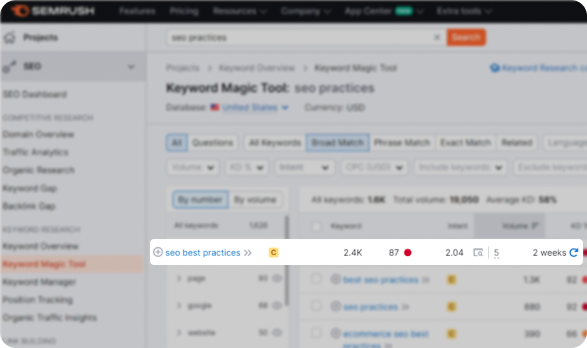
Tap into topic clusters
By building content around an array of interlinked topics, rather than individual keywords, you can establish domain authority and capture a broader audience. This strategy involves selecting a “pillar” content piece that gives a general overview of a main topic, and then creating related content pieces that explore subtopics, linking back to the pillar content. These internal links create a network of content (“topic cluster”) that helps search engines understand the semantic relations between pages, thereby increasing the domain authority on the subject as a whole, and boosting the visibility of all the content in the cluster.
For example, if you have a fitness website, your pillar content could be about “The Fundamentals of Fitness”. The cluster content might include articles like “Best Exercises for Building Strength,” “How to Create a Balanced Workout Routine,” and “The Importance of Recovery After Exercise.” Together, this cluster thoroughly covers the chosen topic, and also helps to position your site as an authority on the subject, potentially improving search engine rankings and attracting a broader audience.
3. Craft Impactful Title Tags and Meta Descriptions
Title tags and meta descriptions are your first opportunity to make a convincing impression in the SERPs. That makes them a critical component of your on-page SEO strategy.
Title tags
Title tags are clickable headlines displayed in search results and are crucial for SEO, usability, and social sharing. The ideal length for a title tag is between 50 to 60 characters only. This prevents it from being truncated in search results on various devices.
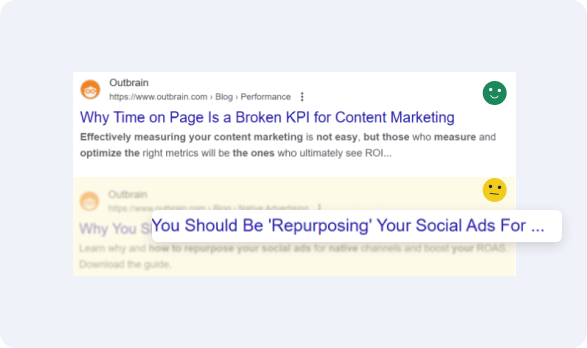
Title tag optimization tips:
- Make sure to include the target keyword at the beginning to boost relevance.
- Align your title with the user’s search intent for better engagement.
- Use unique title tags for each page to avoid confusion in search results.
- Refrain from stuffing unnecessary keywords; keep it natural and readable.
Meta descriptions
The meta description provides a brief summary of the content of a web page, and appears below the title and URL in the search results. Think of the meta description as a digital elevator pitch for the page, encouraging searchers to click through to your site.
Meta description optimization tips:
- Google may truncate meta descriptions after 155 to 160 characters, so make sure your description is pithy, informative, and encapsulates the core message of the page.
- Incorporate your primary keywords thoughtfully, and use them to create a compelling call to action.
Writing effective title tags and meta descriptions is an art form. When executed correctly, they can significantly enhance click-through rates and provide an accurate preview of what users will find on your webpage – playing a pivotal role in your website’s performance in organic search.
4. Optimize for Mobile
With most internet users accessing the web from mobile devices, mobile optimization has become a critical aspect of SEO practices. Search engines like Google have recognized this shift and altered their algorithms to reward sites with mobile-first interfaces. A mobile-friendly website should have responsive design features so it can be properly displayed and easily navigated on smartphones and tablets.
Failure to optimize for mobile can result in lower search engine rankings, diminished user engagement, and ultimately, a significant loss in potential traffic. Mobile optimization is a fundamental SEO strategy, ensuring that the increasing number of users who access the internet via mobile devices have a frictionless and satisfying experience.
5. Improve User Experience (UX)
User experience is a significant ranking factor for search engines. Websites that are easy to navigate, have fast loading times, and include interactive elements are rewarded with higher search rankings. Make sure your website has a logical layout, clear calls to action (CTAs), and fast loading time to reduce bounce rates.
UX and accessibility: Prioritize every user
While smooth navigation is essential to a good user experience, accessibility is the mark of a truly user-centric site.
Image optimization
Alt tags, also known as “alt attributes” or “alt descriptions,” is a concise, descriptive text that accurately reflects the content and function of an image. Alt tags provide a text alternative for images to visually-impaired site visitors. Screen readers use this text to describe the image, making the content accessible to all users.
Moreover, alt tags help in image indexing because search engines, such as Google, cannot “see” images the way humans can. So, they rely on well-crafted alt tags to understand the context and content of an image.
Furthermore, updating alt text for your images is easy, and even more straightforward if you’re using a WordPress environment. This simplicity makes website optimization a task that any site owner can manage without a hitch. Here’s how you can effortlessly add or tweak alt text for the images on your WordPress site.
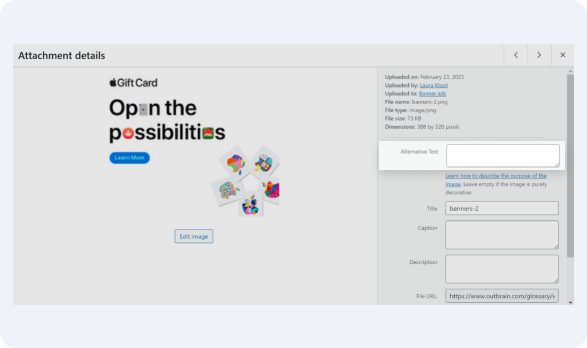
Intuitive design
An intuitive UI/UX design facilitates easy, satisfying user interactions, which can influence your site’s credibility and ranking.
6. Use Internal and External Links
Generating backlinks is a foundational component of SEO. Internal links help to structure your site and spread link equity, while external links to reputable sources can add credibility to your content. Ensure you use anchor text that is relevant to the linked page.
Cultivating a portfolio of quality backlinks is an area where refined tactics make a world of difference. Here are some ways you can build your backlinks and boost your SEO performance:
Guest blogging
Contribute valuable content to reputable sites in your niche to generate authoritative links back to your website. It’s a strategic way to reach a new audience, establish yourself as an expert in your field, and create relationships with peers.
Backlinks are seen as a vote of confidence from one site to another, suggesting that your content is also valuable and trustworthy. This can boost your authority in the eyes of search engines, particularly if you are contributing to sites that already have a strong reputation and are considered authoritative themselves.
Broken link building
Broken link building is a tactic whereby you actively look for broken (i.e., dead or non-functioning) links on other websites. These could be links that point to resources or content that is no longer available. Once you identify a broken link, contact the website owner and suggest replacing the broken link with a link to relevant content on your own site.
Content partnerships
Collaborate with complementary businesses or influencers to create and share content that includes mutual backlinking. These partnerships could result in a series of blogs, whitepapers, webinars, or any content piece that both parties can share. Such collaborations naturally include the exchange of backlinks and expose your content to each partner’s audience
Algorithm impact analysis
Search engines like Google regularly update their algorithms, which can significantly influence the visibility of your website in search results. Regular website analysis is necessary to ensure that these updates do not negatively impact your traffic. This includes monitoring your site’s analytics data after an algorithm update to identify any significant changes in rankings, organic traffic, or user behavior.
Understanding these impacts allows you to adjust your SEO strategies – a process that might involve altering your content, improving website speed, increasing mobile-friendliness, or enhancing the user experience to adhere to the new algorithm parameters. Regular audits and adjustments ensure that your website remains compliant and performs optimally despite the continuous changes.
7. Optimize for Technical SEO
For your website to outrank the competition, it is essential that all technical SEO aspects are finely tuned. Here’s why each component is a piece of the puzzle of your website’s technical health:
Core Web Vitals
Google’s Core Web Vitals is a set of metrics that measure real-world user experience for loading performance, interactivity, and the stability of content as it loads. Search engines factor Core Web Vitals into their algorithms, so paying careful attention to these metrics will elevate user satisfaction on your site, and contribute to improved rankings.
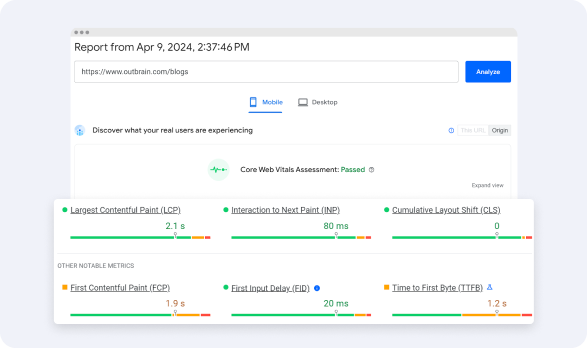
Structured data
By implementing structured data, or schema markup, on your site, you provide search engines with detailed context about the content of your pages. This added layer of information can help search engines better categorize and index your content, which may in turn qualify you for rich snippets – those eye-catching result formats that significantly increase your visibility in the SERPs.
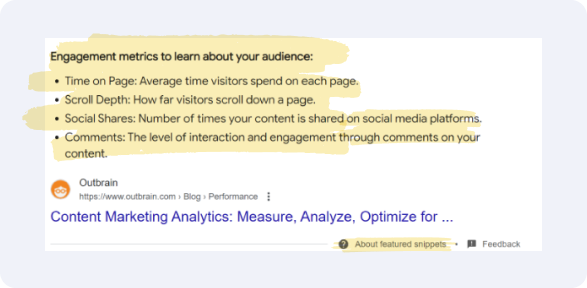
Security measures
Deploying HTTPS – a secure version of HTTP – is critical for protecting the integrity and confidentiality of your users’ data. Search engines prioritize security, and by encrypting the data exchanged between your website and its visitors, you’ll build trust and maybe even see a positive impact on your search rankings.
Advanced analytics
Advanced analytics tools are invaluable to truly understand how your site is performing and how users are interacting with it. They help you to dissect user behavior, follow conversion pathways, and pinpoint any area of your content that might not be up to par – all of which inform data-driven decisions to optimize your site’s performance.
Competitor benchmarking
Keeping tabs on how well your site stacks up against your competitors is essential for staying ahead. Regular benchmarking can highlight where your site excels or falls short, offering insights into the strengths you can capitalize on and the gaps you need to fill. Mimicking industry best practices identified through benchmarking can help you set new standards for your site’s technical SEO.
8. Analyze and Adapt
SEO isn’t a “set-it-and-forget-it” process. Continual analysis of your website’s performance using tools like Google Analytics is essential. Understand where your traffic is coming from, which pages are most popular, and which actions users are taking on your site. Use this data to refine your SEO strategies and make informed decisions.
Far too many websites fall behind because of inadequate performance monitoring and optimization; don’t be one of them!
Wrapping Up
To truly stand out in search results, brands must perform at an exceptional level across every SEO practice, from sophisticated keyword research and content creation to technical prowess, user experience optimization, and a dynamic backlinking approach.
Remember, staying informed, flexible, and proactive is the crux of SEO dominance. With the advanced strategies outlined above, ongoing and robust analysis of your website, and a commitment to continued learning and trend watching, any business can push the boundaries of what SEO can achieve, ensuring prominent SERP positions that leave competitors striving to keep up.
FAQ
What are SEO best practices?
Best SEO practices are all the strategies designed to improve a website’s position on search engine results pages (SERPs). These include conducting thorough keyword research, creating high-quality and relevant content, optimizing website speed and mobile responsiveness, earning high-quality backlinks, and maintaining a good user experience (UX). Regular updates and adherence to search engine guidelines are also key components of SEO best practices.
What are the top 5 SEO strategies?
The 5 best SEO practices are:
- Keyword optimization: Researching and using relevant keywords to meet user intent.
- Content marketing: Developing valuable, high-quality content to engage and inform readers.
- On-page SEO: Optimizing individual web pages, including title tags, meta descriptions, and content structure.
- Link building: Acquiring credible backlinks to enhance a website’s authority.
- Technical SEO: Ensuring the website is crawler-friendly with a clear sitemap, secure connections (HTTPS), and fast loading speeds.
What are the 3 Cs of SEO?
The 3 Cs of SEO refer to:
- Content: Creating relevant, valuable, and high-quality content that answers user queries.
- Code: Optimizing the technical elements of your website, such as HTML tags, to help search engines better index your content.
- Credibility: Establishing your site as a reputable source through backlinks and social proof to boost rankings.
What are the 4 areas of SEO?
The 4 areas of SEO are:
- Technical SEO: Focusing on the backend of your website and how your pages are coded.
- On-page SEO: Ensuring content is optimized for search engines and human readers.
- Off-page SEO: Increasing the authority of your website through backlinks and other external signals.
- Local SEO: Tailoring your SEO efforts to capture local search territories and user preferences.
What are the 3 steps to successful SEO?
The 3 steps to successful SEO include:
- Planning and research: Identifying the right keywords, understanding the target audience, and analyzing competitors.
- On-site optimization: Tweaking the website to make it search-engine friendly by optimizing its structure, content, and user experience.
- Off-site optimization: Building authority through backlinks, social media presence, and online reviews.
What SEO best practices should I keep in mind when optimizing for page speed?
When optimizing for page speed, the following best practices should be prioritized:
Minimize HTTP requests: Streamline the number of elements on your pages to reduce the number of server requests for faster loading times.
Enable compression: Use software applications like Gzip to compress your website files for quicker transfer speeds.
Optimize images: Ensure your images are not larger than required, utilize compression, and use the appropriate file format.
Leverage browser caching: Store website resources on local computers to reduce loading times on repeat visits.
Improve server response time: Look for performance bottlenecks such as slow routing or database queries and address them for enhanced server response.
Use a Content Delivery Network (CDN): Distribute your content across multiple servers around the world to make it available faster to users everywhere.
What are some off-page SEO best practices for 2024?
Off-page SEO best practices for 2024 include:
Authoritative backlinking: Focus on acquiring high-quality backlinks from reputable and relevant websites.
Social media engagement: Increase brand presence and content visibility through strategic social media marketing.
Influencer outreach: Collaborate with industry influencers to reach wider audiences and gain credibility.
Guest posting: Contribute valuable content to respected publications in your industry to build authority and obtain quality backlinks.
Community involvement: Participate in industry forums, discussions, and community platforms to enhance visibility and authority.
What are some technical SEO best practices for 2024?
Technical SEO best practices for 2024 should include:
- Core Web Vitals: Focus on improving loading times, interactivity, and visual stability as part of Google’s user experience metrics.
- Mobile-friendly design: Ensure your website is fully responsive and delivers a seamless user experience across all devices.
- Structured data: Implement schema markup to provide search engines with context about your content and improve chances of rich snippet features.
- HTTPS security: Always protect your site and user data with Secure Sockets Layer (SSL) encryption.
- Clean URL structure: Maintain a straightforward URL structure that is easy to read by both users and search engines.
- Proactive error handling: Regularly scan for crawl errors, broken links, and duplicate content to maintain the site’s health.


